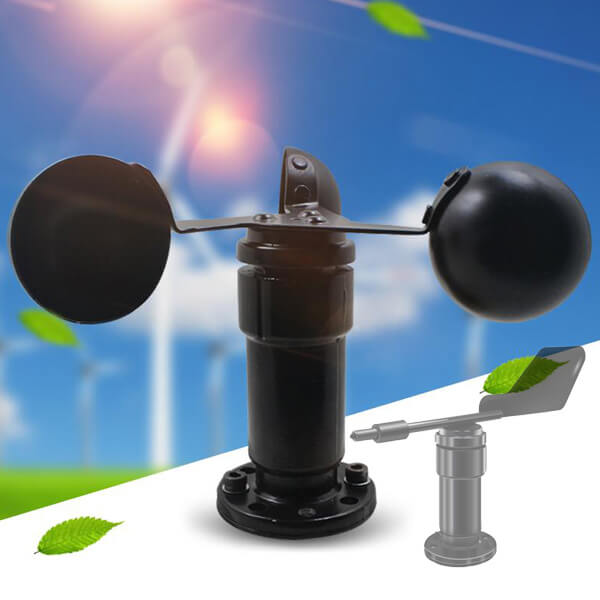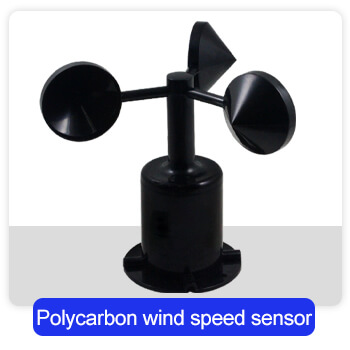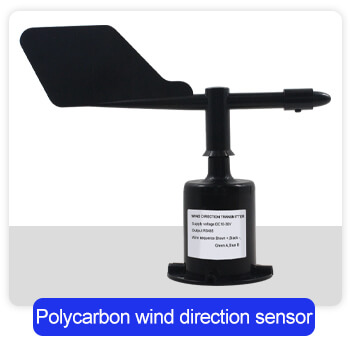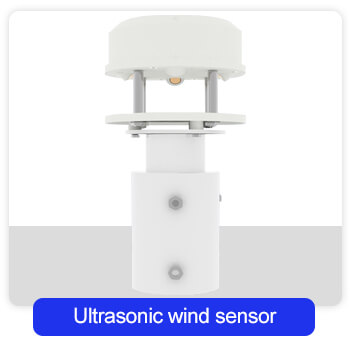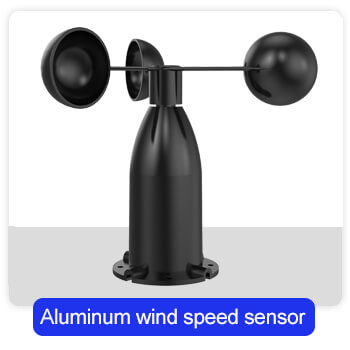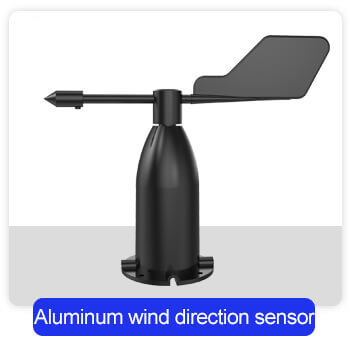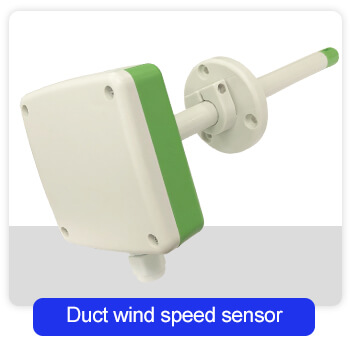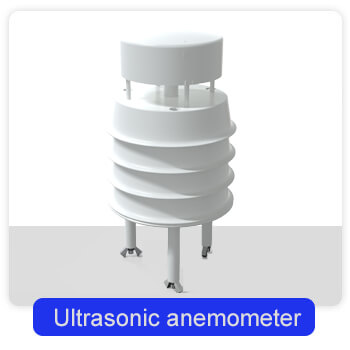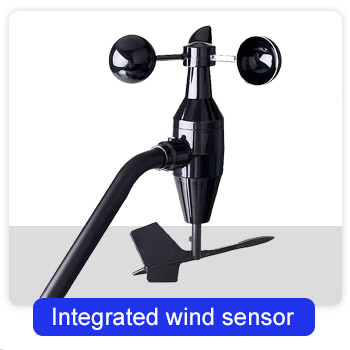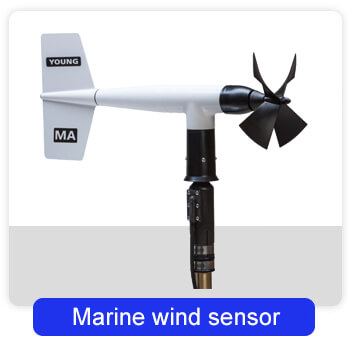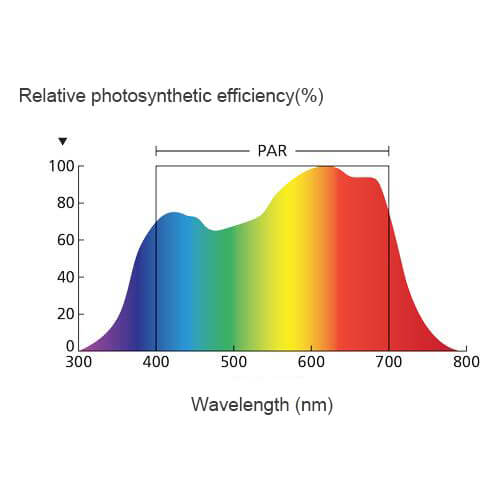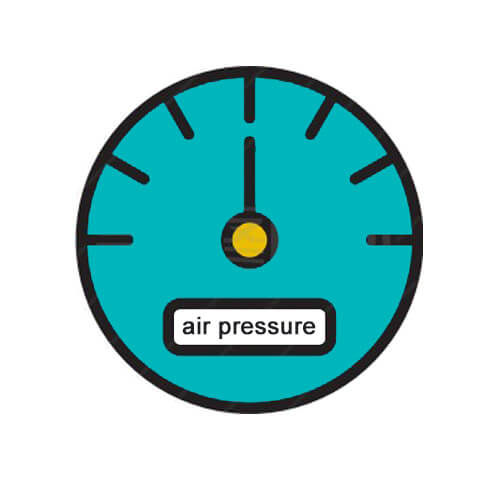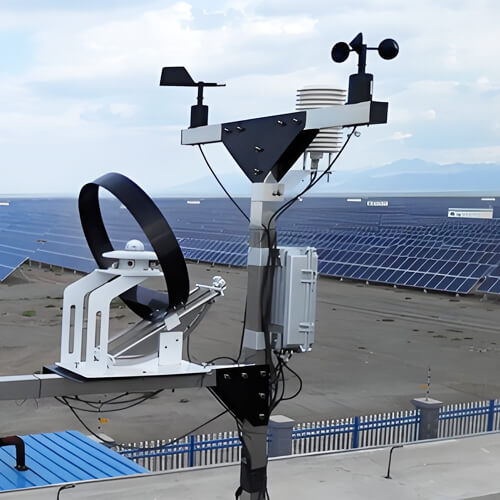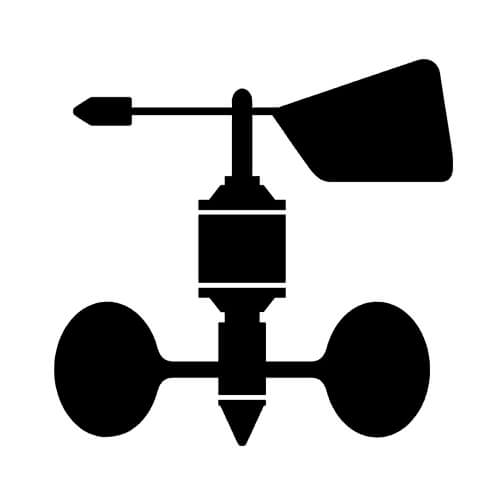Table of Contents
How wind sensor work?
Wind speed sensor working principle
Wind speed sensor is a physical device used to measure wind speed. The wind generated by the airflow drives the top three wind cups to rotate, and the central axis drives the internal sensing element to generate an output signal, which can be used to calculate the wind speed.
Wind direction sensor working principle
The wind direction sensor is a physical device that measures and transmits wind direction information. It works through the rotation of a wind vane arrow and transmits its measurement information to the coaxial encoder board, and at the same time outputs the relevant value of the wind direction.
How does an ultrasonic wind sensor work?
The working principle of the ultrasonic anemometer is that the propagation time of sound waves in the air will be affected by the wind speed component parallel to the propagation direction. The basic components of the sonic anemometer are composed of ultrasonic transmitters and receivers located at opposite ends of the sampling space.
Different wind sensor types display
Wind sensor parts
The core sensing part inside the wind direction sensor is the wind vane, and the current wind direction value is calculated through the rotation of the bearing of the wind vane.
The sensing part of the wind speed sensor is a three-cup wind component, which is composed of three carbon fiber wind cups and a cup holder. The converter is a multi-tooth rotor and a slit optocoupler. When the wind cup is rotated by the horizontal wind force, the frequency signal is output by the rotation of the live-axis rotor cup in the slit optocoupler.
The transducer of the wind speed sensor uses a precision conductive plastic potentiometer. When the wind direction changes, the tail wing rotates through the shaft to drive the potentiometer shaft to rotate, thereby generating a variable resistance signal output at the movable end of the potentiometer.
What are the problems with wind sensors?
The wind sensors may have some problems during the application process. The following is an analysis of the reasons for wind sensor problems:
Wind speed sensor problem
Inflexible rotation and stuck
When this happens to the new wind speed sensor, it may be due to a problem with the bearing rotation caused by the loose internal components. Measure the wind speed sensor after powering the device. If it is faulty, please contact the manufacturer to replace the sensor. Manually rotate the wind cup on the top of the wind speed sensor. If the wind cup does not rotate smoothly, it indicates that there is a problem with the device connection. You can handle it under the guidance of a technician.
If the old wind speed sensor is not sensitive during the working process, the surface of the sensor needs to be cleaned first to see if there are obstacles around the wind cup that hinder its rotation. Such as shelter from leaves, the icing on the wind cup, tilt of the sensor, etc. Even a small feather stuck on the wind cup will cause a big deviation in the value.
Secondly, if the above problems are eliminated, the sensor needs to be manually disassembled to clean up the dirt and other stolen goods inside. In windy and sandy weather, some fine gravel may enter the sensor shaft and affect its work. Therefore, users should perform maintenance and clean on time during the process of using the wind speed sensor to ensure the service life of the equipment. Finally, if the wind speed sensor is used for too long, the internal components are prone to aging or fall off. At this time, you need to replace the accessories of the wind speed sensor or buy a new sensor directly.
The wind speed is zero
There may be three reasons for the wind speed sensor reading to show zero: First, the reed switch used as the sensor in the device began to fail. Gently tapping the main body of the anemometer above the wind speed axis sometimes restores correct operation. If possible, it is inclined to confirm the reed switch problem, but it needs to be resolved sooner or later. Contact professional and technical personnel for replacement.
Secondly, another possible reason for intermittent speed readings is that the cable is damaged and the speed conductors are in intermittent contact. Check the cable and the power supply system for any problems, connect with the backup device, and rotate the wind speed shaft. If the shaft rotates flexibly and there is no obvious noise, it means that the rotating part of the wind speed sensor is working normally. Check whether the reading has data. If there is data, check other parts Whether it is working normally and without data, the wind speed sensor is faulty and the sensor needs to be replaced.
Finally, if the starting wind speed is too high, the possibility of this reason is relatively small. If you are measuring at a location and the current wind speed is too low, even the starting wind speed of the wind speed sensor cannot be reached, the reading will always be zero. Therefore, to avoid this situation, users should perform measurements at multiple locations and at multiple time points. Measure whether to display the reading under different wind conditions.
There is a significant deviation between the wind speed sensor and other anemometers
It is not common for users to think that their anemometer readings are insufficient. Several real anemometer problems may cause low-speed readings. The most obvious is that there is a rigid bearing on the wind cup shaft, which can be remedied according to the instructions in the above reasons, or the reed switch is malfunctioning, which may cause the connection with other anemometers. There is a deviation from the reading.
The measurement speed of wind speed will vary with height. Therefore, the two wind speed sensors mounted should be at the same height and the same exposure. Besides, there is another less obvious reason. The wind does not blow at a steady speed, especially in the inland areas, but it usually blows with short highs and lows during gusts.
Most wind speed sensor manufacturers on the market have different equipment measurement principles, and the wind speed ranges measured by different equipment are also very different, so the measured values between different equipment are not comparable.
The indirect reading problem of the wind speed sensor
If it is the wind sensor with Modbus output, the cause of the fault is that the wiring is not connected properly, and the circuit problem needs to be checked.
The cause of the failure of the 4-20ma wind speed sensor may be the unstable connection of the terminal device or a problem with the connection line.
The reason for the failure of the network wind speed sensor is that the current network environment is unstable, the signal transmission is interrupted, and the signal is unstable.
Wind direction sensor problem
The wind vane is not flexible and stuck
If you buy a new wind direction sensor, the wind vane element on the top of the wind vane component is stuck when you manually rotate it, which means that the sensor is damaged and the bearing rotation is obstructed. Contact the manufacturer for replacement. If you connect the device and measure the wind direction sensor with electricity, and the wind vane is not sensitive, you need to replace the sensor or contact the manufacturer to troubleshoot. If you are not an expert in wind direction sensors, it is recommended that you do not disassemble the sensor at will.
If your wind direction sensor is inflexible and stuck after a long time of use, the possible reason is that the internal components have been aging or severely worn due to the long period of maintenance and cleaning. You need to replace the sensor element or disassemble the sensor for internal cleaning.
Wind direction readings intermittently
When the wind direction sensor is put into use, there is a problem with intermittent readings. At this time, you need to check your wiring problems. In most cases, this is caused by poor contact between your equipment and the acquisition device. Professional technicians call it “signal open circuit”.
Incidentally. What is an open signal?
Open circuit refers to the state of the circuit when no current flows between two points in the circuit or a conductor with a very large impedance (or resistance) are connected. An open signal line may be interfered with and produce incorrect output.
In this case, you need to check the connectors and wires patiently.
The wind direction value is zero
Some users will encounter such a problem when they use the wind direction sensor for the first time. When you connect the sensor, the value is always displayed as zero. When encountering this kind of problem, you manually turn the wind vane off the wind direction sensor. If the value changes, it means that the direction where you placed the wind vane coincides with the current wind direction, and the reading is the current wind direction value displayed. If the wind direction value still shows zero during the rotation, you need to check the cable and the power supply system to eliminate wiring problems and no power supply problems. If there is no problem with the above, the internal sensor may be damaged and you need to replace the accessories or sensor.
The azimuth value of the wind direction is incorrect
First of all, the wind direction sensor has a directional sign “N”. During the installation process, the directional sign “N” should point to the true north. If you do not follow this procedure, the problem of inaccurate wind direction measurement will occur.
Secondly, use the backup device to connect and turn the wind vane. If it can be turned so that the wind direction indicator value is 239°, then the wind direction sensor is working properly. Check whether the other parts are working properly; use the backup device to connect and rotate the wind vane, and the wind direction indicator does not appear. 239° and other directions often show jump display, which means that some infrared light-emitting diodes in the wind direction sensor are broken, check and repair; use a wind direction and speed calibrator to check whether the wind direction sensor is working properly.
ABOUT US
Renke is a top Chinese manufacturer of environmental monitoring equipment. We have a professional R&D and sales team and have been engaged in the production and sales of sensors at home and abroad for 10 years.
Renke provides a variety of anemometers and wind sensors, which have the wind cup principle, the ultrasonic principle, or the hot wire principle. They have one thing in common: they are designed to be used under the harshest environmental conditions. We have many types of wind sensors, such as wind cup sensors, duct wind sensors, ultrasonic wind sensors, etc., among which wind cup anemometers are the most commonly used sensors in weather stations.
Please contact Renke to get the best wind sensor and wind meter, we are a professional weather sensor manufacturer.

